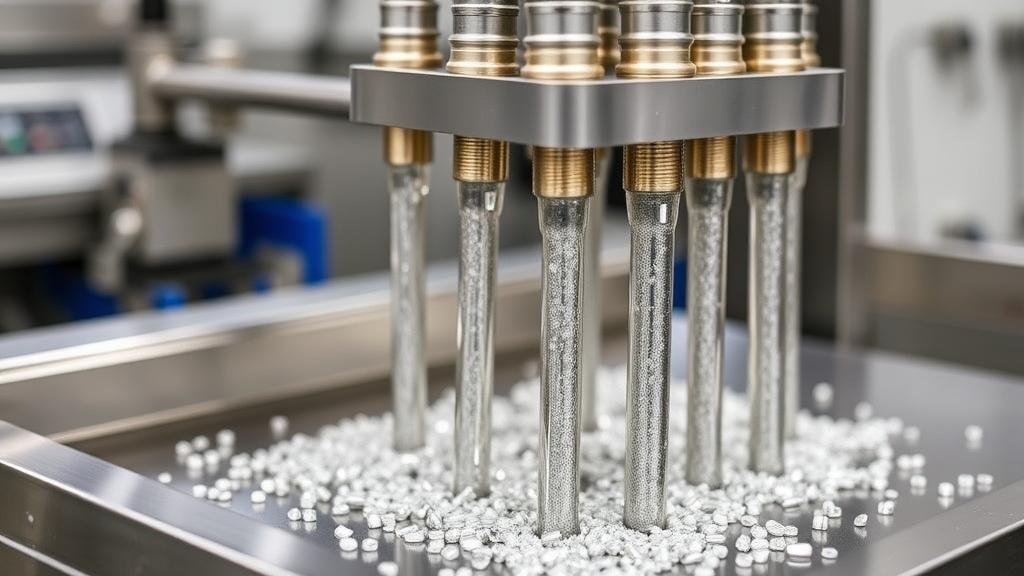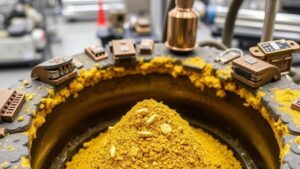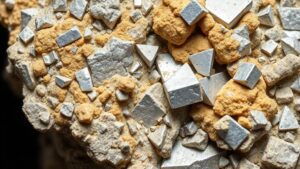Advanced Column Flotation Techniques for Recovering Fine Silver
Advanced Column Flotation Techniques for Recovering Fine Silver
Column flotation is an effective method for separating valuable minerals from ores, particularly in the recovery of fine particles of metals such as silver. This article delves into the advanced techniques employed in column flotation, emphasizing their role in optimizing silver recovery rates while addressing challenges encountered during the process.
Understanding Column Flotation
Column flotation differs from traditional flotation methods in its structure and operational principles. It utilizes a tall column filled with pulp and air bubbles to enhance the flotation process. This technique improves the separation of fine particles, making it ideal for recovering silver from ore.
The Mechanism of Flotation
In the flotation process, hydrophobic particles attach to air bubbles and rise to the surface, forming a froth layer, while hydrophilic particles remain submerged. This separation occurs due to differences in surface chemistry and particle size. The use of column flotation allows for greater retention time, improved bubble-particle interaction, and more efficient froth removal.
Advanced Techniques in Column Flotation
1. Use of Reagents
The introduction of specific reagents can significantly affect the efficiency of silver recovery. Commonly used flotation reagents include:
- Xanthates: Collectors for silver and other sulfide minerals.
- Frothers: Such as MIBC (methyl isobutyl carbinol), which stabilize the froth.
- Depressants: To selectively inhibit unwanted minerals from floating.
The optimization of reagent composition and dosage can lead to enhanced selectivity and recovery rates. For example, a study showed that using xanthate collectors increased silver recovery by up to 20% in specific ore types.
2. Bubble Generation Techniques
Advanced bubble generation techniques are crucial for maximizing the surface area available for particle attachment. Techniques include:
- Microbubble generation: Producing smaller bubbles enhances the attachment capability with fine particles.
- Air-sparged hydrocyclones: This method enhances bubble dispersion and improves recovery rates significantly.
For example, research indicates that microbubble technology in column flotation systems can improve silver recovery efficiency by up to 30% due to better interaction with fine particles.
3. Operational Parameters Optimization
Operational parameters such as pulp density, flow rate, and column height significantly influence the flotation process. Adjustments can lead to improved performance in fine silver recovery.
- Pulp density: Lower densities often improve recovery but may reduce throughput.
- Column flow rate: Requires balance; too high can lead to poor froth stability.
- Column height: Greater heights enhance the retention time, allowing more valuable minerals to be recovered.
Case studies have shown that optimizing these parameters resulted in a silver recovery increase from 60% to nearly 85% in specific operations.
Challenges in Silver Recovery
1. Fine Particle Challenges
Recovering fine silver particles is particularly challenging due to their tendency to form aggregates, which can negatively affect flotation performance. Useation of advanced reagents tailored for fine particles can help mitigate these challenges.
2. Column Maintenance and Operation
Column flotation systems require regular maintenance to ensure optimal performance. Issues such as blockages, uneven air distribution, and froth stability must be closely monitored and addressed. For example, automated control systems can facilitate real-time monitoring and adjustments, ensuring consistency in recovery rates.
Real-World Applications
Several mining operations have successfully implemented advanced column flotation techniques for fine silver recovery. For example, a major mining company in South America reported a 25% increase in silver recovery after upgrading their column flotation systems with improved reagents and bubble generation technology.
Conclusion and Actionable Takeaways
Advanced column flotation techniques present significant opportunities for enhancing the recovery of fine silver. By optimizing reagent types, bubble generation methodologies, and operational parameters, mining operations can significantly increase their silver yield. To implement these techniques effectively, consider the following actions:
- Conduct a detailed analysis of current flotation practices and identify areas for improvement.
- Invest in research and development to explore innovative reagents and bubble generation technologies.
- Use modern monitoring systems to optimize operational parameters continuously.
By adopting these strategies, companies can improve their silver recovery rates and drive profitability in an increasingly competitive market.



